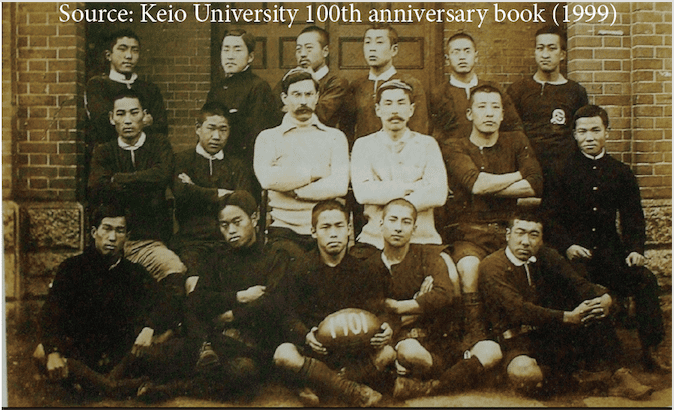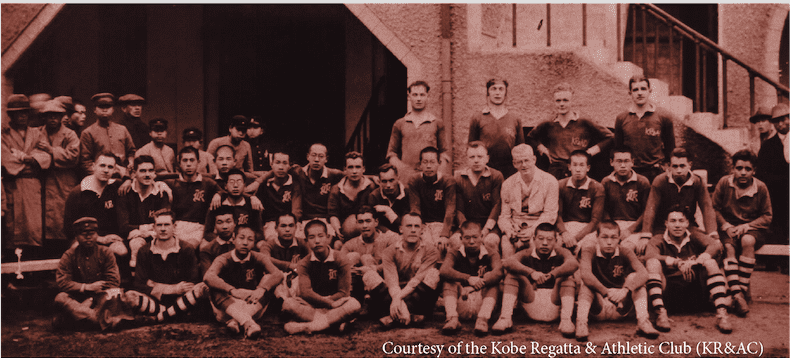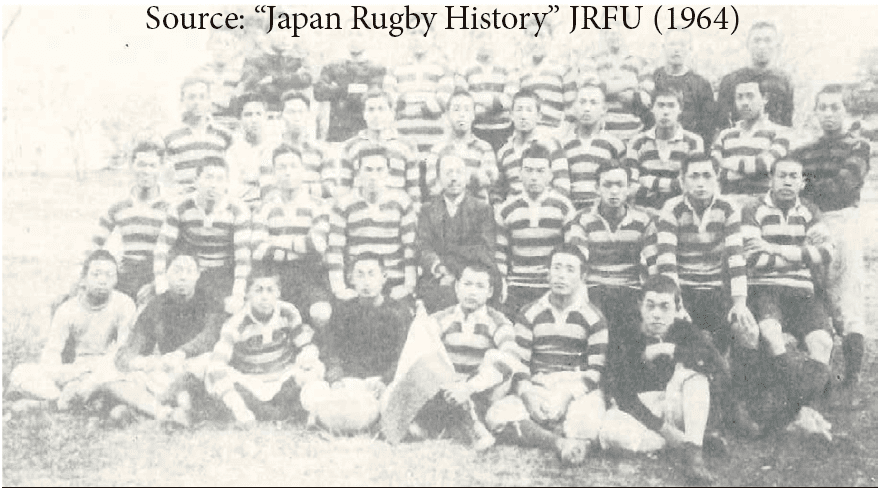According to Japanese rugby historians, Ginnosuke Tanaka and Edward B.F. Clark first taught rugby to Keio University students in 1899, and in December 1901, Keio University played at the Yokohama Country and Athletic Ground (YC&AC) and the cricket ground in Yokohama Park It is said that the game was played at the YC&AC and the cricket ground in Yokohama Park.

However, evidence was also found that matches under rugby-style rules were usually played in Yokohama prior to 1899.
In the late 1870s, there was also evidence that Japanese students at the University of Engineering (an educational institution under the jurisdiction of the Ministry of Engineering in the early Meiji era, with many foreign teachers. There was also evidence that Japanese students at the University of Tokyo’s Faculty of Engineering (the predecessor of the University of Tokyo’s Faculty of Engineering) played soccer (not soccer). One British professor wrote A football club sprang up, and the students actually gradually got hotter as they played without regard to the rules of the game.” Unfortunately, this football did not last long.
While the Japaneseization and bushidoization of baseball was seen at the former Ichiko High School in the early 1890s, Keio University is undoubtedly the founder of the unique student rugby culture that still occupies a place in Japanese sports today.

Some writers claim that rugby became popular after Keio Gijuku introduced it, but clearly this team was next, not in Tokyo, Yokohama, or Kobe, but in the ancient capital of Kyoto. It was more than a decade after Keio Gijuku.
The second team to introduce rugby was the old Three High School in 1901, but it was not yet an officially established club. The former Three High Schools later became Kyoto University, and the rugby club was established in 1922. A large stone at Shimogamo Shrine, not far from Doshisha High School, depicts how rugby was first played in the Kansai region by students of the three former high schools under the guidance of Keio University.

As you can see, they were students of the old First High School as well as the old Third High School in their early 20s. The former Sankei-Sanko played Keio-Gijuku for the first time in April 1911, losing 39-0. Doshisha also played Keio Gijuku in January 1912 and lost 24-3.
For roughly the next 10 years, only the YC&AC (Yokohama Country & Athletic Club) KR&AC (Kobe Regatta & Athletic Club) enjoyed rugby in Japan, in addition to these three teams. entered a period in which it was no longer possible to win. However, no games were played during World War I.
Like Keio University, which was aiming to beat YC&AC, the former San Kou was also aiming to beat Kobe’s KR&AC rugby team.
W.P. Siemes, captain of KR&AC for several years, told his son, “In 1913, when I arrived at the old Three High School ground for a match, I was surprised to see over 2,000 students in rugby style, preparing for the game. In 1922, Edward Prince of Wales (later King Edward VIII) came to watch a match between KR&AC and the three former high schools, a milestone in the history of rugby in Kyoto (see photo). (See photo).
However, when we talk about student rugby, we are talking about university rugby, and Doshisha High School, founded in 1911, is said to be the first high school in Japan to play rugby. According to the Doshisha University Rugby Club’s 100th anniversary commemorative magazine, the first high school (U18,19) rugby match was recorded in May 1912, two months before the end of the Meiji Era, between Doshisha Junior High School (now Doshisha High School) and Kyoto Daiichi Junior High School (now Rakuhoku Municipal High School).

Despite the fact that Kyoto is so highly regarded for its role in promoting rugby in Japan during an important period of popular growth, the introduction of the sport in junior high schools has been just as slow as in universities.